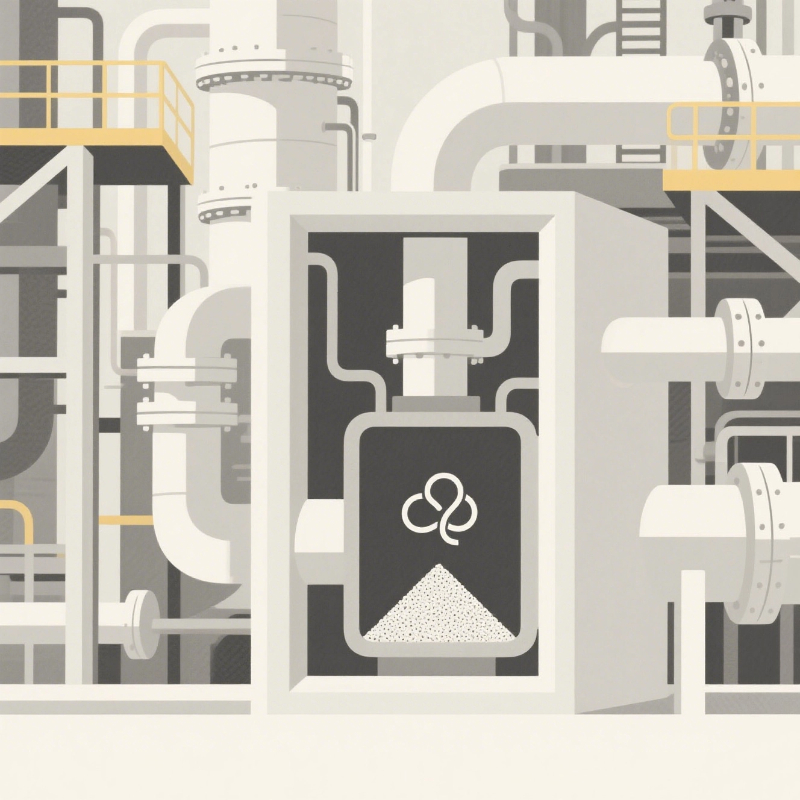
- Chinese: Business Department 0539-8782638
- English: chau@dengzhuochem.com

- Chinese: Business Department 0539-8782638
- English: chau@dengzhuochem.com

Catalysts: The Invisible Engines Powering Modern Industry
2025-07-18
Catalysts: The Invisible Engines Powering Modern Industry
From the fertilizers that grow our food to the clean fuels powering our future, countless essential products rely on complex chemical transformations. At the heart of these processes lie catalysts – remarkable materials that make reactions faster, more efficient, and often possible in the first place. Understanding their role helps appreciate the backbone of modern manufacturing.
Why Catalysts Matter: Efficiency at Scale
Unlike raw materials that get consumed, catalysts act as facilitators. They provide a surface or environment where specific reactions can occur more readily, under milder conditions (lower temperature, pressure), and with far greater energy efficiency. This isn't just a minor improvement; it's fundamental to the economic and environmental viability of large-scale industrial processes. Without them, producing essential chemicals would be prohibitively slow, energy-intensive, and costly.
Key Applications Where Catalysts Drive Progress
Several critical global industries depend heavily on specialized catalysts:
Feeding the World: Ammonia Production
The Haber-Bosch process, responsible for over 50% of the world's nitrogen fertilizer (and thus global food security), relies entirely on robust iron-based catalysts. These catalysts enable the direct reaction of nitrogen from the air with hydrogen under high pressure, creating ammonia efficiently on a massive scale. Advancements focus on improving catalyst longevity and activity under demanding conditions.
Enabling the Energy Transition: Hydrogen Generation
Hydrogen is crucial for cleaner fuels and industrial processes. Most industrial hydrogen today comes from Steam Methane Reforming (SMR), where catalysts drive the reaction between methane and steam. Water-Gas Shift (WGS) catalysts further convert carbon monoxide, maximizing hydrogen yield. Crucially, catalysts are also key in emerging technologies like CO₂ Methanation (converting captured CO₂ and H₂ into synthetic methane), offering potential pathways for carbon utilization and renewable energy storage.
Building Blocks of Modern Life: Petrochemicals & Refining
Turning crude oil into usable fuels and feedstocks for plastics, fibers, and pharmaceuticals involves numerous catalytic steps. Key examples include:
Hydrotreating/Desulfurization: Catalysts remove sulfur and other contaminants from fuels, meeting environmental standards and protecting downstream equipment.
Hydrocracking: Catalysts break down larger, heavier hydrocarbon molecules into valuable lighter products like gasoline and diesel.
Isomerization: Catalysts rearrange molecules to improve fuel quality (e.g., increasing octane rating).
Reforming: Catalysts upgrade low-octane naphtha into high-octane gasoline components.
Versatile Workhorses: Nickel-Based Hydrogenation
Nickel catalysts are widely used for adding hydrogen across double bonds. Applications range from food processing (e.g., hardening vegetable oils) to producing key intermediates in pharmaceuticals and fine chemicals, valued for their effectiveness and cost-efficiency.
Supporting Roles: Zeolites and Molecular Sieves
Beyond the catalysts themselves, highly structured materials like zeolites and molecular sieves are indispensable. Their uniform, molecular-sized pores act like microscopic filters. They are essential for:
Drying: Removing trace water from process streams that could poison catalysts.
Separation: Isolating specific molecules (like isomers - compounds with the same formula but different structure) critical in petrochemical production.
Purification: Ensuring feedstocks meet the strict purity requirements for catalytic reactions.
The Critical Factor: Catalyst Reliability
For industrial plants, catalyst performance isn't just about initial activity; it's about consistent performance over time. Catalyst deactivation or unexpected failure can lead to costly shutdowns, reduced yield, and off-spec product. Selecting catalysts known for their durability, stability under process conditions, and predictable lifespan is paramount for operational efficiency and profitability. This reliability stems from rigorous manufacturing control, deep understanding of material science, and thorough performance testing.
Driving Innovation Forward
The development of new and improved catalysts continues to push the boundaries of industrial chemistry. Research focuses on enhancing selectivity (producing only the desired product), increasing resistance to poisons, enabling lower energy pathways, and facilitating novel reactions like advanced CO₂ conversion. These advancements are crucial for building a more sustainable and efficient industrial base.
Understanding the silent, yet vital, role of catalysts helps illuminate the complex infrastructure behind everyday essentials and future innovations. As demands for efficiency and sustainability grow, the science and engineering behind these remarkable materials become ever more critical.

<< Previous Page
Next Page >>